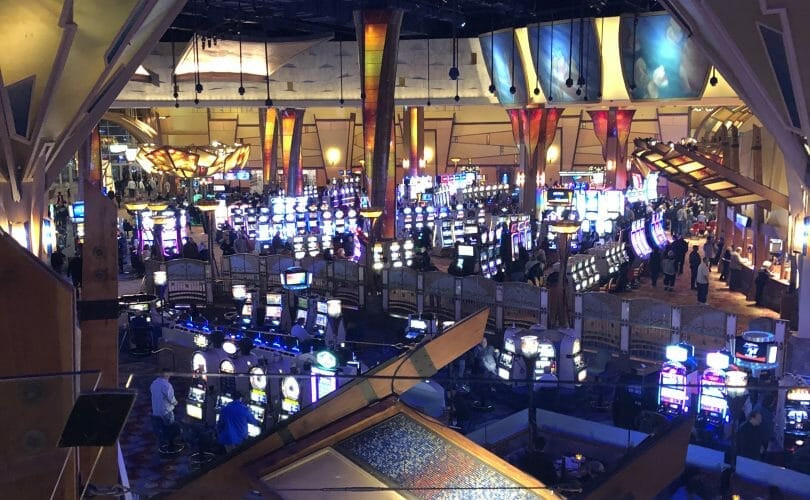Here’s one of those persistent beliefs that float around, attributed to a UNLV professor: Casino carpets are really tacky in an effort to make you look up, and to disorient you so you gamble more.
Status: You’ve been punked. Well, sort of.
The origin of this rumor comes from something written by David G. Schwartz, a professor at the University of Nevada, Las Vegas, who made a tounge-in-cheek reference in an essay he wrote that he later regretted:
I’m really going to update the essay that they reference to make it a little less tongue in cheek. On the Internet, no one can hear you being sardonic. I think I’ll add some more serious reasons why carpet looks like it does: mostly to hide stains and to jazz up a pretty big space.
–David G. Schwartz
Many media outlets have pointed to that essay (since taken offline) and reported on it as it’s one of those “so absurd sounding it must be true,” and when you have a trusted professor talking about it, and one who has a history of photographing casino carpets as a hobby and building a website around it (also now offline, although a cool concept), it sounds like good source material. And in the days today of websites just sourcing other websites, those bad articles are now the source material for new bad articles, and it just keeps perpetuating the myth.
Schwartz’ quote above points to the more reasonable explanations for casino carpets being how they are. Interesting patterns add to the overall atmosphere of a casino. At this point, having those types of carpets are sort of a time-honored visual that helps place you in a casino. Some casinos even trademark their patterns as it’s part of their overall look and feel, which is why you don’t see the same carpeting patterns in a bunch of different casinos.
Similarly, busy patterns help to hide normal wear and tear, as well as stains. If you think about solid carpets found in many homes, the moment you get a stain that can’t be removed, it’s an obvious visual that will stay there until you replace the carpet. In a casino, it can be obscured much more easily.
The investment to replace carpeting can be expensive, so casinos will do larger remodelings much more infrequently, and will change out other things like lighting, machines and layouts, and more during them. Bellagio has been going through this in the past year, as has SLS (since rebranded Sahara), both in Las Vegas. As such, carpeting needs to be able to take the kind of abuse that a casino floor can bring. That means patterns that can hide stains and heavy use.
If you’re interested in reading more on the topic, Brian Dunlap’s Quora response to the question is a really well written deep dive on the topic.





